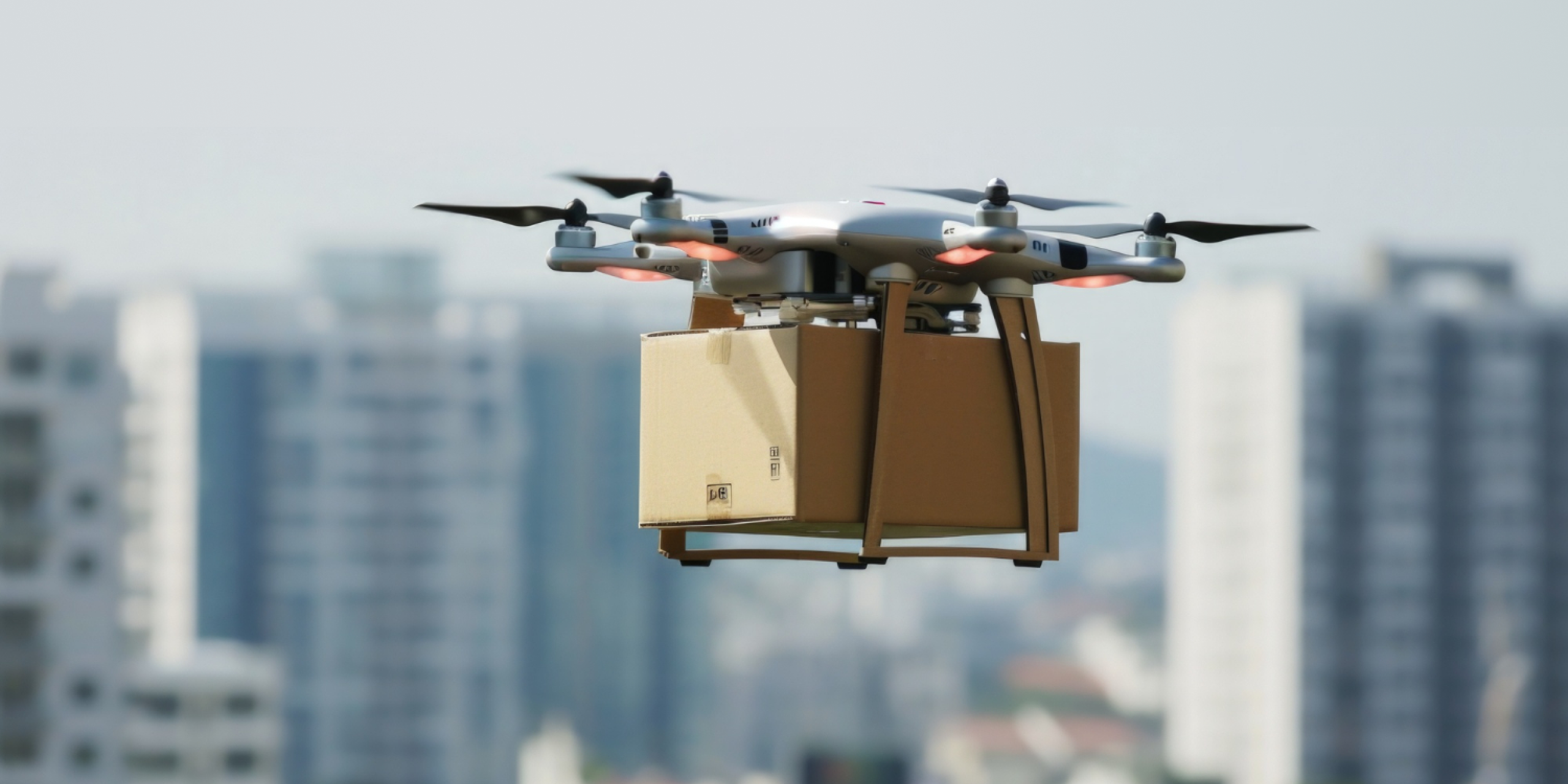The Future of Last-Mile Logistics: Technology, Trends, and Transformation

Last-mile logistics refers to the final stage of the supply chain, which is the process of transporting goods from a warehouse to the customer’s doorstep. Until a decade ago, last-mile logistics often took 5 to 7 days due to inefficient routes, limited infrastructure, and a lack of real-time tracking. Even just three years ago, delivery times averaged to 2 to 3 days. Today, deliveries can happen in as little as 8 minutes or within 24 hours.
This dramatic shift is driven by investments in local fulfilment centres or in-city warehouses, and technological advancements such as AI-based route planning, real-time data availability, and innovative solutions like drones and on demand delivery. Challenges that were once major bottlenecks – such as traffic congestion, inefficient routing, and lack of visibility – have now become tameable factors, enabling improved customer satisfaction and a stronger competitive advantage.
As the most customer-facing leg of the supply chain, last mile logistics has become a critical touchpoint for brand trust and loyalty. With expectations evolving rapidly, this final stretch is no longer about delivery it’s about redefining convenience, responsiveness, and customer experience. Here are some transformative trends driving the shift in last-mile logistics and what to expect next as we move to the future.
Transformative Trends in Last-Mile Logistics
Drone and Autonomous Vehicle Delivery: Drone and self-driving vehicle technology is gaining momentum in last-mile delivery, offering faster, contactless, and more efficient alternatives to traditional logistics. China and the United States are prominent examples leading the way in this innovation, along with Australia, Canada, and the UK widely exploring these technologies. Last-mile operations are now becoming smarter and more agile through automation. Drones, in particular, are proving to be game changers by significantly improving deliveries in remote and congested areas where conventional vehicles face limitations. These airborne systems help reduce delivery times, cut down operational costs, and minimise environmental impact as well.
Major brands like Walmart are actively investing in and adopting this technology to automate their last mile deliveries and boost efficiency. Walmart has achieved the capability to deliver to 95% of the U.S. population within three hours, with same-day deliveries doubling over the past year, highlighting the growing impact of automation on consumer satisfaction and supply chain efficiency.
Urban or In-city Warehousing and Micro-Fulfilment Centres: Urban or in-city warehousing is gaining importance as businesses aim to meet the growing demand for same-day and next-day delivery. By positioning warehouses closer to city centres, companies can significantly reduce transit times, lower transportation costs, and improve delivery speed, which all help enhance customer satisfaction.
Micro-fulfilment centres (MFCs), which are smaller, tech-enabled hubs within urban areas, further streamline the process. These centres are designed for fast, high-volume order fulfilment, making them ideal for e-commerce and grocery delivery. Together, urban warehousing and micro-fulfilment centres (MFCs) allow businesses to respond quickly to demand, reduce delivery distances, minimise traffic delays, and ensure faster order fulfilment. This helps overcome common last-mile challenges like long transit times, high delivery costs, and missed delivery windows keeping businesses competitive in a fast-paced market.
However, there remains a growing need for compliant, well-designed in-city warehousing infrastructure. Many of today’s last-mile facilities are operating out of non-compliant setups ranging from illegal basement clubs being used as storage and cloud kitchens crammed into unhygienic alleyways to delivery hubs squeezed into invisible back lanes. These fail to meet regulatory, safety, and operational efficiency standards, creating a gap between rising demand and suitable supply. Institutional developers are stepping up to this demand by offering well zoned, approved, and compliant Grade A facilities that are designed to run these high-volume, tech-enabled operations.
Predictive Shipping and Demand Forecasting: Earlier goods were stored in warehouses in bulk without really knowing which product will be in demand. But through predictive analytics, one can now forecast the high-demand goods and pre-position a fast-moving inventory closer to consumer centres to reduce fulfilment time. It facilitates better planned routes, efficient allocation of resources, and reduce delays. For instance, Blinkit uses predictive analytics to forecast demand and optimise inventory in its dark stores, enabling faster deliveries and minimising stockouts in high-demand urban areas.
Artificial Intelligence (AI) and Machine Learning for Smart Logistics: Although AI and machine learning are widely discussed in logistics, their real-world applications in last-mile delivery remains fairly limited. Companies like UPS have adopted these technologies for tasks like route optimisation and dispatch, but current systems are still largely rule-based and operate within fixed parameters. They struggle to handle the complexity and unpredictability of real-time logistics environments.
What keeps the spotlight on AI is its future potential. As the technology matures and becomes more integrated across systems, we could see far more intelligent, adaptive solutions ones that not only respond to issues like traffic or weather disruptions but also anticipate them and act proactively. The real transformation of last-mile logistics through AI is just beginning.
Sustainable and Green Delivery Methods: Warehouses today are embracing EV-compatible docks, charging infrastructure, and green packaging stations to combat carbon emissions. With the growing emphasis on sustainable and lower cost transportation, EV vehicles have become a key feature in modern logistics infrastructure. Horizon in-city warehouses and last mile parks provide the necessary infrastructure for sustainable operations including, provision for ample parking and EV charging stations to ensure that tenants have the option and encouragement to shift towards cleaner vehicles easily.

Leveraging Last-Mile Trends by Partnering with the Right Warehousing Partner
A reliable in-city warehousing developer prioritises locations within or near urban centres, ensuring proximity to end consumers. By positioning warehouses strategically within high-demand zones and densely populated areas, they enable faster and more efficient last-mile deliveries. These urban hubs reduce travel time, cut down delivery costs, and improve service levels for same-day or next-day fulfilment. Additionally, well-connected city warehouses with access to local arterial roads and public transport routes ensure seamless distribution within tight delivery windows. In addition to strategic placement, top-tier developers focus on infrastructure upgrades that ensure smooth goods flow. Improved access, vehicle movement within parks, multiple docks, and advanced loading systems minimise delays. Some institutional developers, like Horizon Industrial Parks, go beyond offering just warehouse space – they also provide capex solutions for storage racks, automation-compatible infrastructure, and inventory management solutions for in-city warehousing, weaved into the leasing contracts.
Just as importantly, working with an institutional developer offers built-in compliance and hygiene assurance, especially in contrast to the ad hoc, informal setups that many last-mile players are still operating from. Horizon’s Grade A facilities meet regulatory standards, safety norms, and zoning approvals, giving clients peace of mind from day one. And when demand spikes, they have the scale to match it. Whether it’s unlocking strategic land banks, upgrading brownfield assets, or buying and rebuilding inner-city stock, their capacity to deliver at scale is what sets them apart in the fast-moving dark warehouse and last-mile logistics space.
Altogether, this integrated approach allows businesses to scale quickly and cost-effectively, resulting in a more agile, compliant, and responsive last-mile operation.
Conclusion
Last-mile logistics is undergoing a major transformation, driven by emerging technologies, smarter infrastructure, and increasing customer demands. Innovations like autonomous delivery, AI integration, and sustainable warehousing practices are helping businesses deliver faster, more efficiently, and with greater environmental awareness. By positioning warehouses strategically and improving logistical infrastructure, companies can reduce delivery time, enhance service quality, and address longstanding connectivity issues. As the supply chain continues to modernise, organisations that adopt these forward-thinking last-mile logistics solutions will continue to gain a strong advantage in today’s highly competitive logistics landscape.